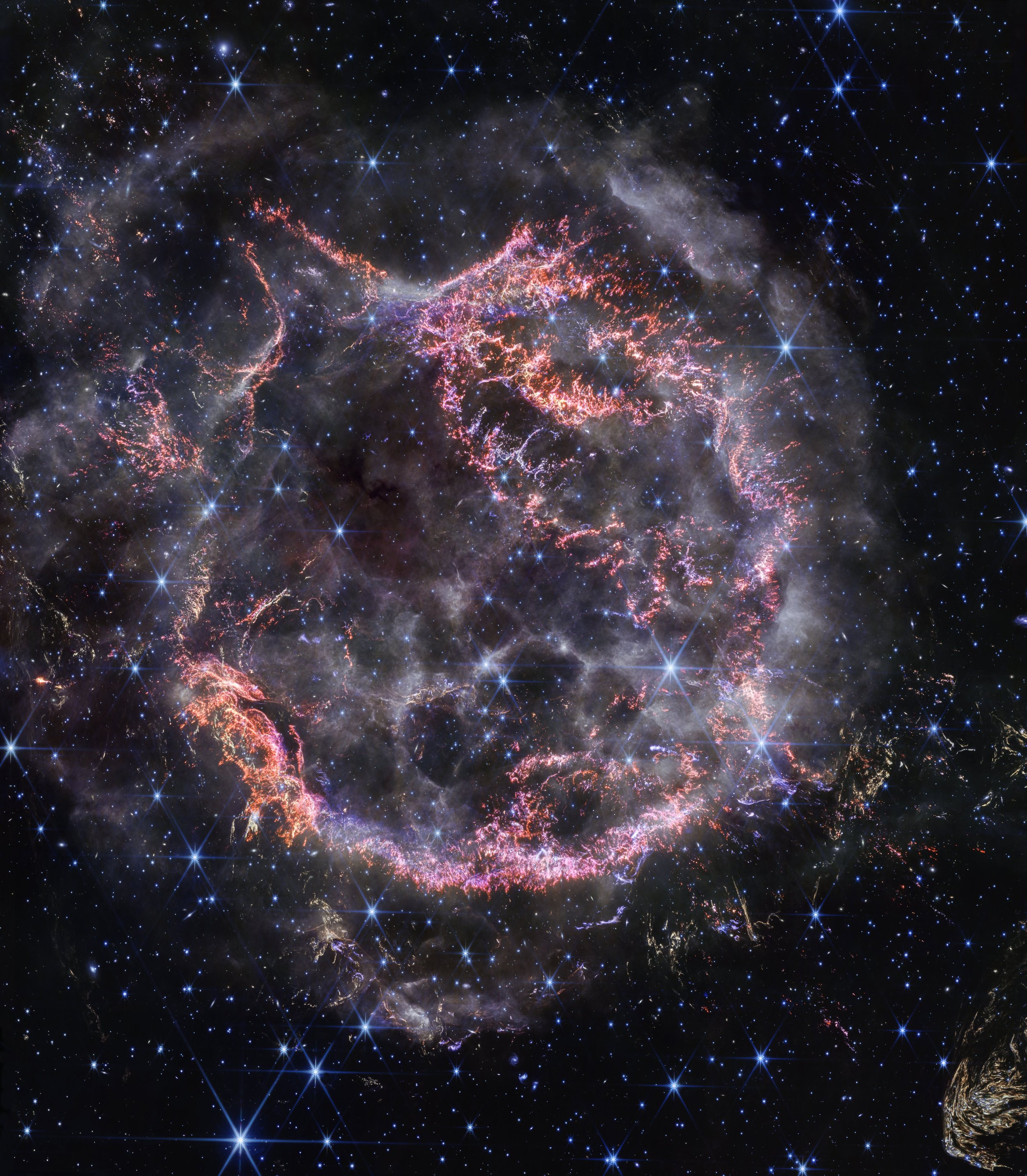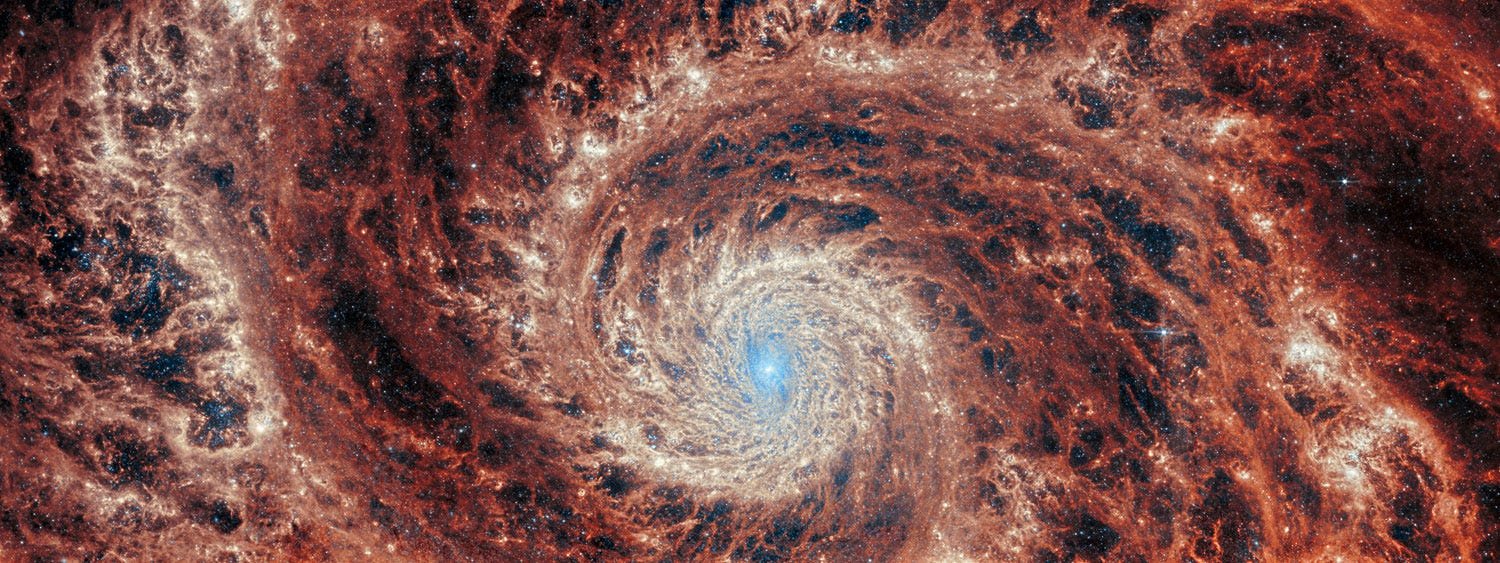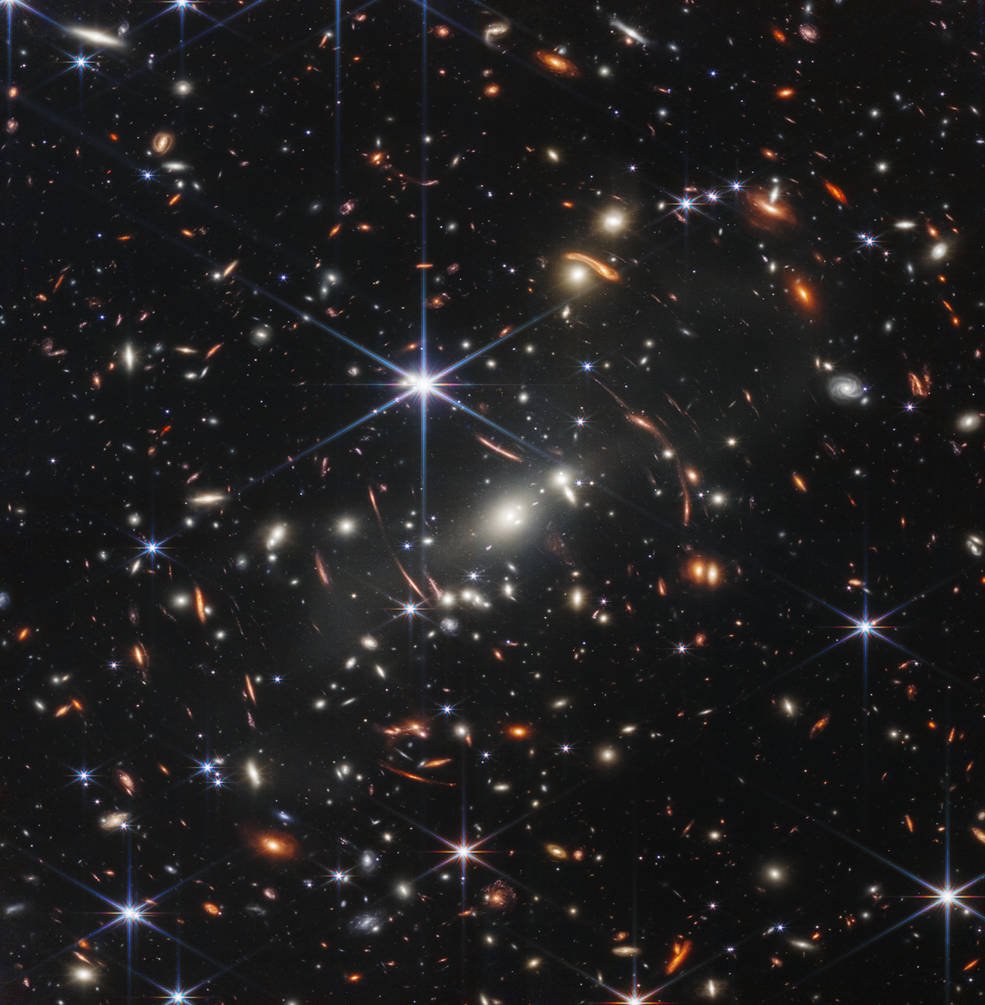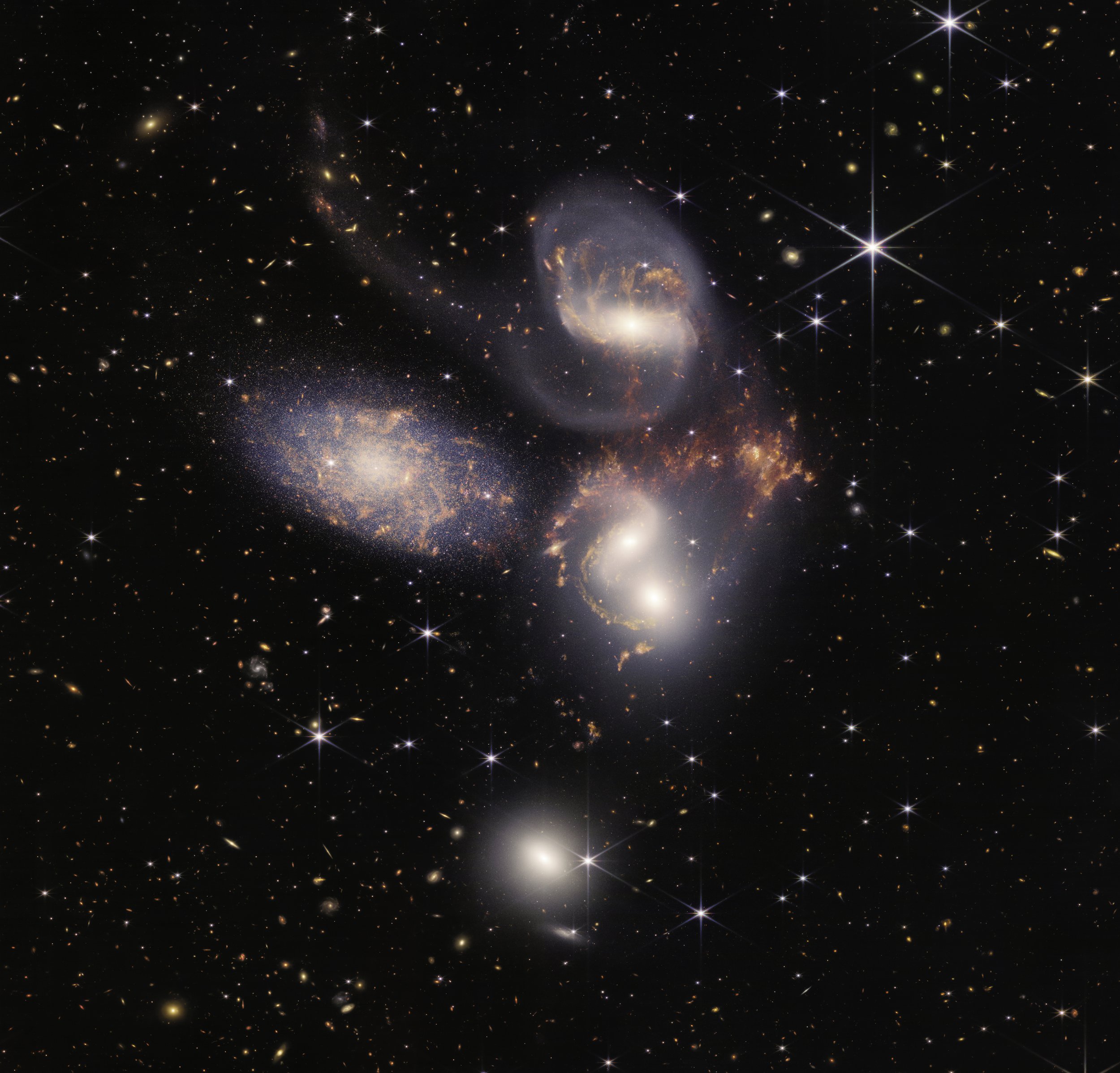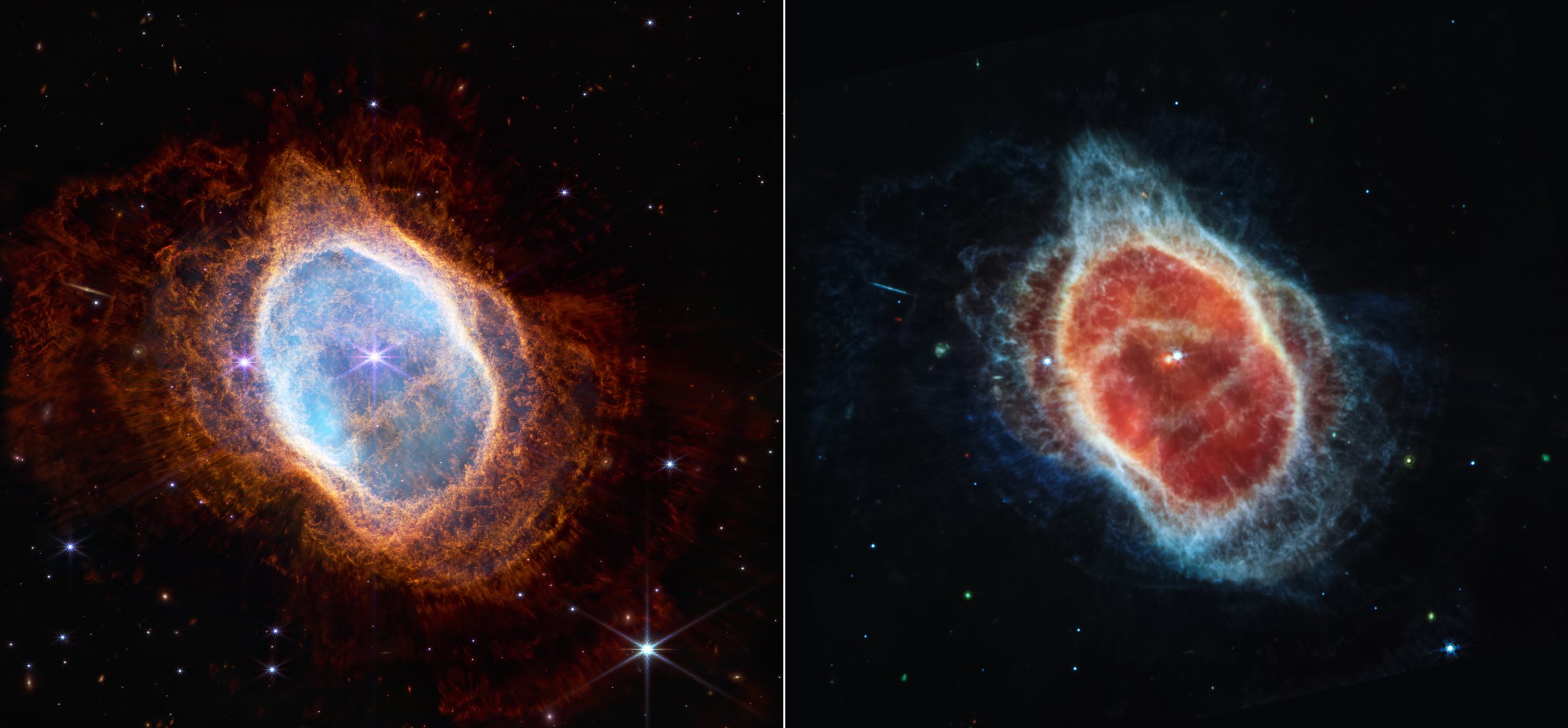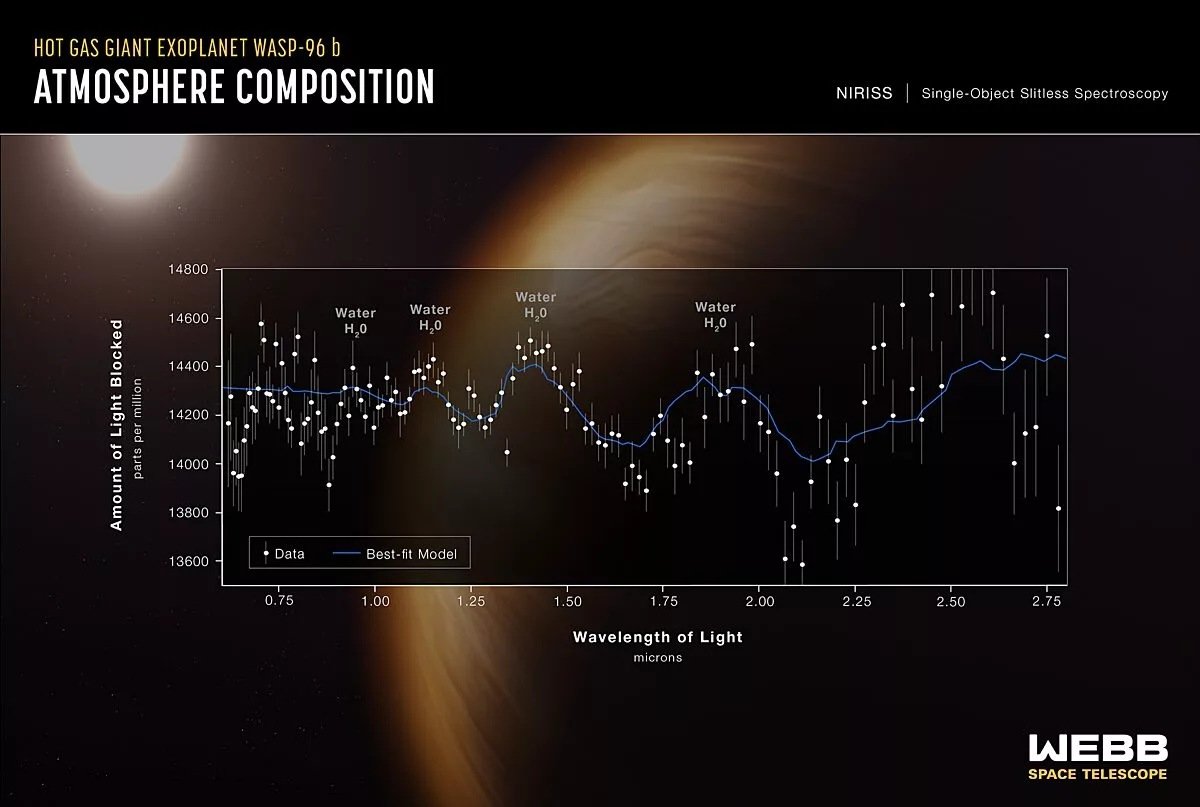Wow. Now THIS is the kind of imagery I am here for. Look at that crispness and clarity! And the galaxies in the background.... On behalf of amateur space aficionados everywhere, I declare that JWST was worth the time, trouble and money it took to build and deploy.
“NASA’s James Webb Space Telescope captured this beautiful juxtaposition of the nearby protostellar outflow known as Herbig-Haro 49/50 with a perfectly positioned, more distant spiral galaxy. Due to the close proximity of this Herbig-Haro object to the Earth, this new composite infrared image of the outflow from a young star allows researchers to examine details on small spatial scales like never before.
Herbig-Haro objects are outflows produced by jets launched from a nearby, forming star. The outflows, which can extend for light-years, plow into a denser region of material. This creates shock waves, heating the material to higher temperatures. The material then cools by emitting light at visible and infrared wavelengths.”






